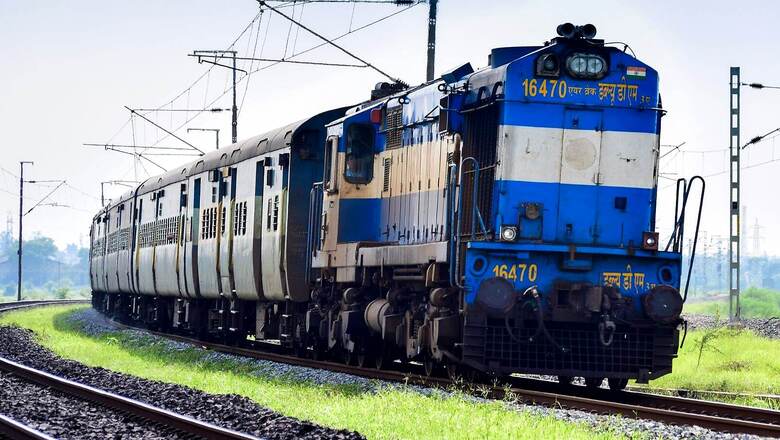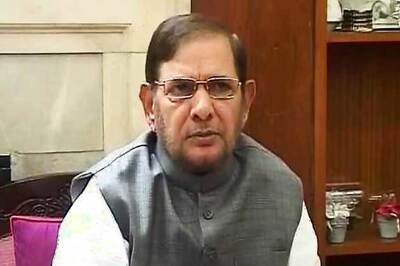
views
The Indian Railways has received 297 proposals from various businesses under the ‘StartUps for Railways’ initiative, Union Railway Minister Ashwini Vaishnaw said in a tweet on Friday.
The initiative was launched by the government in June to provide seed funds of up to Rs 1.5 crore to innovative technological solutions. The fund will be granted directly to the Indian Railway Innovation Policy start-ups. It is expected that through the participation of a huge and untapped start-up ecosystem, this initiative will bring scale and efficiency in the fields of operation, maintenance, and infrastructure building.
In June, Vaishnaw had noted that start-ups will be able to connect with national transporters using this platform. At the same time, he said that problem statements received by the ministry will be presented before the start-ups to find innovative solutions.
Understanding the Issues
As per the data shared by the Union Minister, under the problem statement, the broken rail detection system received the maximum proposals at 43, followed by the development of online condition monitoring system for traction motors of 3-phase electric locomotives (42), app for post-training revision & self-service refresher courses (41), track inspection technologies for accurate inspection (40) and others.
To understand more about these issues, News18 reached out to Lalit Chandra Trivedi, ex-officer of the Indian Railway Service of Mechanical Engineers and the Chairman of the Rail Division of the Indian chapter of the Institute of Mechanical Engineers.
Talking about the Broken Rail Detection System, Trivedi said this is undoubtedly the most serious threat to Indian Railways’ dependability and safety. According to him, it is more common in the early mornings as winter approaches, and the detection mechanism is currently reliant solely on human detection.
“Indian Railways intends to switch to an ultrasonic machine-based digital system which can provide an immediate prompt. Ultimately however, the quality of rails needs to be improved particularly in view of the fact that Indian Railways intends to switch to a 25-tonne axle load system against the present limit of 22.3 tonnes,” he added.
Trivedi further noted that rail stress monitoring (21 proposals) is also related to broken rail detection system “as ultimately stress result into broken rails”.
The headway improvement system for suburban train systems (four proposals) is related to the train frequency with RAMS — which stands for Reliability, Availability, maintainability and Safety — in the existing infrastructure. Explaining, Trivedi said: “This calls for automatic signalling system, driverless trains, integration with train protection system.”
Track inspection technologies, which received one of the highest number of proposals, was introduced to replace human-dependent systems with machine-based, digitalized, cloud-based intelligent systems.
On the design of superior EM pad for heavy haul freight wagons (nine proposals), Trivedi said: “As Railways moves to higher axle load vehicles, stress on rubber pads which transfer a load of wagon through bogie frame to the wheel, will increase, needing superior quality of rubber pad (elastomeric pad).”
“It may be noted that elastomeric pads are failing in wagons even with the current lower limit of axle loads,” he added.
While talking about another problem on the list – the light-weight wagon for transporting commodities like salt (11 proposals) — the expert suggested that to increase throughput, Railways must improve its tare to payload ratio and it must switch to lighter-weight stainless steel waggons. “In case of covered wagons, the Indian Railways has taken a retrograde step of switching back to normal Cotten steel after switching to stainless steel.”
Citing the use of remote sensing, geomatics and GIS for bridge inspection, he highlighted the fact that since most of the critical structure of a bridge is under water and under the riverbed, condition monitoring of inaccessible and invisible structure is very important for safety.
Trivedi also believes that among all the issues on the list, app for post-training revision & self-service refresher courses is something which is elementary and should have been done long ago.
Lastly, the list also pointed out 20 proposals for track-cleaning machine. It is understood that the tracks are exposed to a large amount of garbage being thrown over them by nearby habitations and, in some locations, the situation is critical.
“Track cleaning system needs to be mechanised. Presently, no multinational track machine supplying company is supplying such a machine,” Trivedi said.
Read the Latest News and Breaking News here




















Comments
0 comment